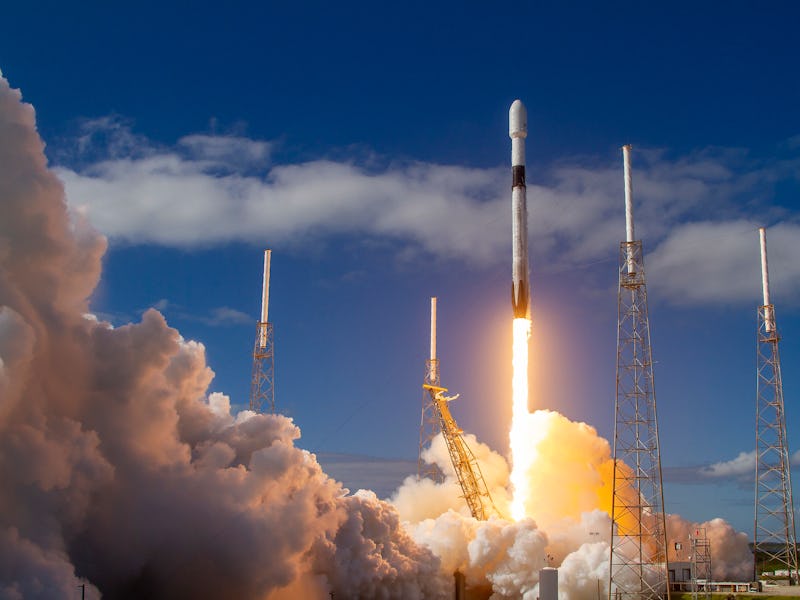SpaceX's bold Starlink internet plan takes another big step in 2020
The upcoming launch will test out a way to dim the satellites’ brightness.

After two successful launches last year that left our skies a little brighter, SpaceX is preparing to launch the third batch of its Starlink internet satellites and become the largest commercial fleet operator in the world.
SpaceX is scheduled to launch 60 more satellites to low-Earth orbit at 9:19 p.m. Eastern on Monday, January 6 from the Cape Canaveral Air Force Station in Florida, aboard a Falcon 9 rocket. (The first liftoff of the year was originally scheduled on December 30, and later on January 3, before being pushed back due to weather conditions.)
The private aerospace company had announced in September that it hopes to conduct as many as 24 Starlink satellite missions this year, and add 180 more satellites to its growing broadband internet constellation.
SpaceX launched two batches of its Starlink satellites in May and November, 2019. Monday’s launch will bring the total number of satellites to 180, making Starlink the largest fleet of commercial satellites.
Each launch positioned 60 internet satellites in low-Earth orbit, with another 60 being prepared for Monday’s launch. The company has already gotten approval to launch 12,000 broadband internet satellites by the United States’ Federal Communications Commission, and has reportedly filed paperwork for an additional 30,000 satellites.
With the satellites in place, SpaceX hopes to dominate the telecommunications market by providing affordable, high-speed internet.
Not everyone is a fan of SpaceX’s growing fleet; the satellites have not been well received by astronomers. Unlike other satellites that orbit the Earth while being thousands of miles away, the Starlink satellites have to be stationary and much closer to Earth, around 200 miles away, in order to provide the promised high-speed internet connection. The 120 satellites already in place have started interfering with observations and the company claims that they did not expect them to be this bright.
The American Astronomical Society announced on December 5 that it was working with SpaceX in order to help mitigate the effects of the satellites in question.
“The goal of Starlink is to provide worldwide internet service, an aspiration we do not want to impede,” reads the polite statement from the AAS, an organization with much less power than Elon Musk’s SpaceX. “We do not want to give up access to optical observations from the ground. Our group’s task is to find a path forward that accommodates both uses of the sky.”
As the company prepares to launch 60 more satellites, one of them will be geared with a possible solution. SpaceX is testing out a non-reflective coating at the bottom of one of the satellites to reduce its brightness as seen from Earth.
“This is going to be an experiment … We’re going to do trial and error to figure out what’s the best way to get this done. But we are going to get it done,” Gwynne Shotwell, president and chief operating officer at SpaceX, said during a meeting with reporters at the company’s headquarters in Hawthorne, California.
“We want to make sure we do the right thing, to make sure little kids can look through their telescopes. It’d be cool for them to see a Starlink. I think that’s cool. But they should be looking at Saturn and the moon,” she added.
The company wants to make sure that the coating does not affect the performance of the satellite first before applying it to other ones.
This year will be a major one for SpaceX, with Monday’s rocket launch kicking off a series of planned launches.
SpaceX plans on launching as many Starlink satellites into low-Earth orbit as they can, Shotwell said in December. However, commercial launches will take precedence over the company’s broadband internet project.
“If some customers move out, I’ll have some Starlink launches — maybe up to four Starlink launches this year — but we won’t push a customer out for that,” she said.